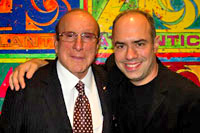EDITOR’S NOTE: TWENTY YEARS AND LOOKING AHEAD
I’ve recently completed my 20th year as editor of this magazine. I’ll always be grateful for this opportunity and for Wesleyan’s willingness to entrust me with the assignment when I had never previously edited any magazine. I had a lot to learn in a hurry, and one of the first things I learned was that a magazine is perpetually a work in progress. It can be better. Always.
But what does “better” actually mean? Is it a metric defined by reader interest? In the online world we’re spoiled by the avalanche of data at our fingertips. We know exactly how many people have read a particular article or watched a video—and much more besides. The opposite is true in the world of our print magazine. Without extensive surveying (don’t worry; you’re not going to get a survey with every magazine), we have no idea how many people are reading a particular article. Wesleyan’s occasional broad-based surveys have included a few questions about magazine readership and have consistently shown that the magazine is widely read by alumni and parents. That’s comforting but doesn’t provide much guidance for improving our work.
In the absence of statistical information about readership habits, we can (and do) pay attention to what our peers in the magazine world are doing. Others, after all, have innovative ideas that are worth examining. Though helpful, that approach feels low on calories. We want Wesleyan magazine to be unmistakably Wesleyanish; that is, connected to our audience in ways that aren’t cloned from other institutions.
The environment for Wesleyan has changed greatly in 20 years. In the mid-’90s, most of our readers had few options for getting news from the university: the magazine, the long defunct Red & Black newsletter, a subscription to the Argus (subject to the vagaries of the U.S. mail), and an occasional letter from the president. Now there is more information about Wesleyan available online and through social media than any one person would likely want. The magazine can’t remain relevant by covering news that’s been available from other sources for months. If we’re doing our job well, we present Wesleyan in a new light—one that’s not tied to topical news but does reveal surprising, delightful information about the university and its worldwide community.
Then there’s Facebook. What’s the role of Class Notes when so many alumni share news with their Wesleyan friends through Facebook? Our class secretaries keep getting lots of notes, so the medium appears to be vital in spite of electronic competition. But we wonder whether the model needs some tinkering.
This is a column to raise a few questions —not to provide answers. We plan to refresh our approach to the magazine during the coming year, but not to alter it drastically. For those of you who were less than fond of our larger format of a few years ago (and I know you are out there), don’t fear; we aren’t planning a reprise. We do, however, want to remain relevant to your interests, so my colleagues on the magazine staff and I invite you to write us at letters@wesleyan.edu, or to me privately, and share your thoughts about how we can do better.
William Holder ’75, editor
wholder@wesleyan.edu

